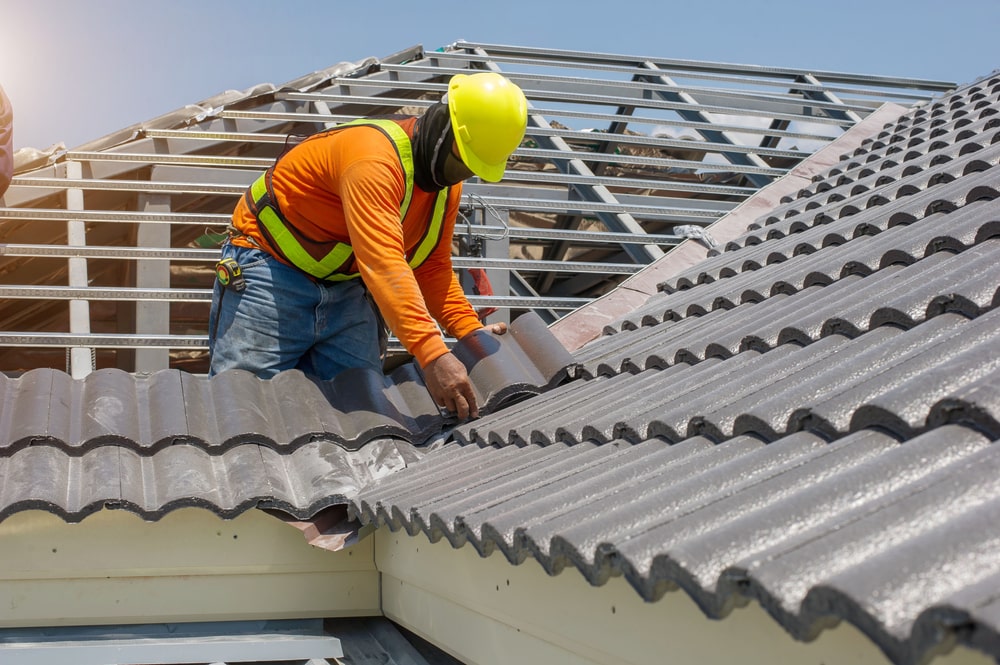Ideal Practices for Ensuring Proper Roof Covering Ventilation
Guaranteeing correct roof ventilation is vital for the durability and performance of a roof covering system. A balanced consumption and exhaust air vent ratio, typically 1:300, plays an essential duty, with intake vents preferably positioned at the lower edge of the roof for amazing air entrance and exhaust vents at the height for cozy air leave. Routine inspections to recognize obstructions and keep clear air movement are vital. Moreover, keeping insulation away from vents is essential to protect against air movement limitation. Understanding these fundamental elements establishes the stage for more thorough insights right into installment and upkeep practices that can considerably boost your roof's performance.
Understand Ventilation Essentials
Appropriately understanding ventilation basics is important for making certain the long life and effectiveness of roof covering systems. Reliable air flow minimizes dampness build-up and temperature extremes in the attic room, both of which can lead to substantial architectural damage with time. A well-ventilated roofing helps in preventing common issues such as mold and mildew development, timber rot, and ice dams, which can compromise the integrity of the roof covering products and the underlying structures.
The primary goal of ventilation is to assist in the activity of air, enabling a consistent exchange in between the outside and indoor environments. This balance is achieved with a mix of intake and exhaust vents that collaborate to keep optimal airflow. Intake vents, generally situated along the eaves or soffits, enable fresh air to go into the attic area, while exhaust vents, usually located at or near the roof ridge, allow hot, humid air to get away.
Secret variables affecting the performance of roof air flow include correct positioning, sufficient sizing, and guaranteeing that both consumption and exhaust vents are unobstructed. Normal examination and maintenance are critical to identify possible clogs, damage, or inefficiencies in the air flow system, thereby guarding the roofing's performance and durability.
Sorts Of Roof Vents
Roof vents play an essential role in preserving efficient attic air flow and, by expansion, the general health of the roof system. Numerous kinds of roofing system vents are offered, each with unique advantages customized to details roof requirements.

Soffit vents are installed under the eaves and operate in tandem with roofing system vents to make sure a well balanced intake and exhaust system. By allowing cooler air to go into from below, soffit vents promote the expulsion of hot air with top vents. Gable vents, situated on the outside walls of the attic, deal one more reliable solution, particularly in homes with gable roof coverings.
Assess Your Existing Ventilation

Following, think about the age and condition of your roof covering materials and ventilation parts. Older systems may not abide with existing structure codes or might have degraded in time, decreasing their performance. Conduct an extensive assessment to determine any type of indicators of deterioration, such as corrosion, damages, or voids that can endanger the system's performance.
Furthermore, determine the attic temperature and moisture levels. High temperatures and moisture can show insufficient air flow.
Setup Best Practices
Effective installment of roofing ventilation systems is critical for guaranteeing optimum performance and durability. Appropriate setup starts with understanding the specific air flow demands of the roofing and the building it covers. This includes determining the right proportion of consumption to tire vents, normally adhering to the 1:300 guideline, which stipulates one square foot of air flow for every single 300 square feet of attic room floor room.

Intake vents ought to be mounted at the roofing system's lower edge, often in the soffits, to enable cool air to go into. Exhaust vents, on the various other hand, must be mounted near or at the roof covering's optimal to assist in the exit of warm, moist air.
Seal all air vent links meticulously to avoid air leakages and potential water infiltration. Usage high-quality products and follow maker guidelines to make sure toughness and effectiveness. Additionally, incorporating ridge vents with baffles can substantially improve airflow performance by stopping wind-driven rainfall and snow from getting in the attic room.
Ultimately, accurate setup of roof covering air flow systems alleviates prospective issues such as mold development, ice dams, and structural damages, making sure the roof covering's stability and the structure's general health.
Normal Upkeep Tips
Uniformity in maintenance methods is see it here fundamental to guaranteeing the long-lasting effectiveness of roofing air flow systems. Regular assessments are important, preferably executed biannually-- in the spring and loss. Throughout these evaluations, make sure that vents are devoid of particles, nests, and various other obstructions that can restrain air movement. Examine for any kind of indications of dampness accumulation or mold, as these can indicate improper ventilation or leaks (roofing companies gainesville florida).
Cleansing the vents is an additional vital job. Use a soft brush or a vacuum cleaner to remove dirt and debris from intake and exhaust vents. Beware not to damage the air vent screens or louvers during the process. Furthermore, inspect the attic room room for any indicators of water damage, which could jeopardize the integrity of the Click This Link roof.
Appropriate insulation is similarly vital. Make sure that attic insulation does not block the vents, as this can drastically restrict air movement. If any insulation has shifted or settled, reposition or change it to preserve an effective obstacle.
Lastly, replace any kind of harmed or missing components without delay. Damaged vents, fractured shingles, or shabby flashing can all add to poor air flow and needs to be attended to right away. Normal upkeep makes certain that the roof covering ventilation system works optimally, therefore expanding the life-span of the roofing system itself.
Conclusion
Ensuring correct roofing ventilation is paramount for preserving the efficiency and sturdiness of a roof system. Adherence to the 1:300 consumption and exhaust air vent proportion, paired with the critical positioning of vents, is vital.
A well balanced consumption and exhaust vent proportion, frequently 1:300, plays an essential role, with consumption vents preferably positioned at the reduced edge of the roofing system for great air access and exhaust vents at over at this website the height for cozy air leave. Consumption vents, normally located along the eaves or soffits, allow fresh air to enter the attic area, while exhaust vents, usually located at or near the roofing system ridge, allow warm, damp air to leave.
Soffit vents are mounted under the eaves and work in tandem with roofing vents to guarantee a balanced intake and exhaust system. By allowing cooler air to get in from below, soffit vents promote the expulsion of hot air via top vents. Adherence to the 1:300 intake and exhaust air vent proportion, paired with the critical positioning of vents, is crucial.